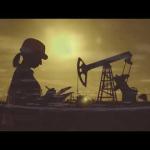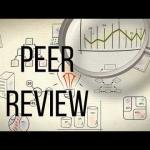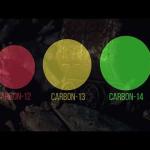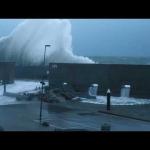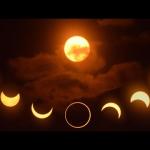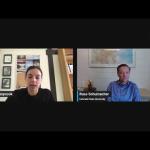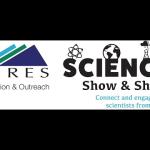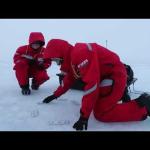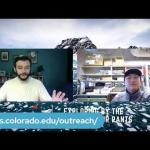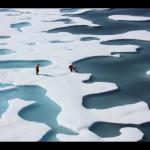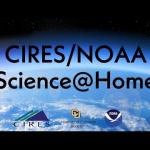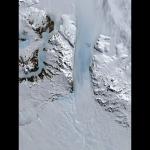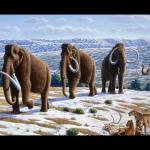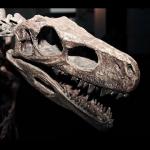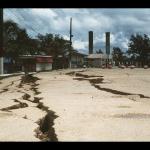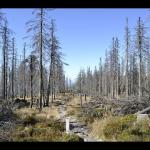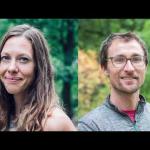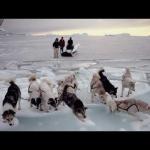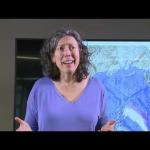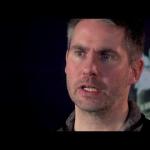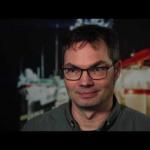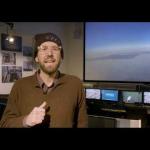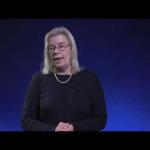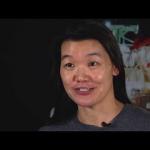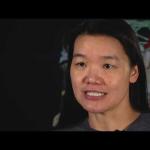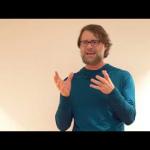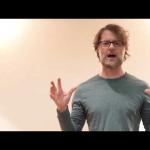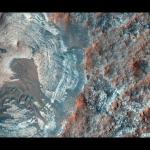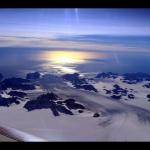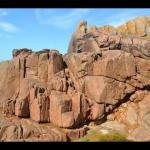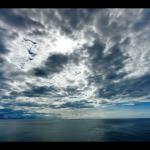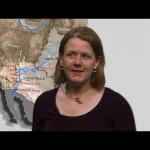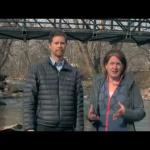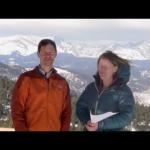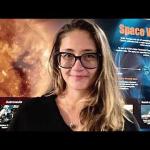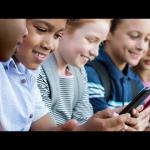Earth Science Stories
This video is part of the Climate Literacy Principles collection by CLEAN. This video highlights Climate Literacy Principle 4.
Science Content Video
This video is part of the Climate Literacy Principles collection by CLEAN. This video highlights Climate Literacy Principle 1.
Science Content Video
This video is part of the Climate Literacy Principles collection by CLEAN. This video highlights Climate Literacy Principle 2.
Science Content Video
This video is part of the Climate Literacy Principles collection by CLEAN. This video highlights Climate Literacy Principle 3.
Science Content Video
Understanding of the climate system is improved through observations, theoretical studies & modeling
Science Content Video
This video is part of the Climate Literacy Principles collection by CLEAN. This video highlights Climate Literacy Principle 6.
Science Content Video
This video is part of the Climate Literacy Principles collection by CLEAN. This video highlights Climate Literacy Principle 7.
Science Content Video
In honor of the April 8th, 2024 total solar eclipse event, the NOAA Science On a Sphere program has developed datasets showing cloud cover potential, eclipse paths, and a narrated movie describing the total eclipse phenomenon.
Recorded Science Talks
Science Show and Share
Discover the intricate web of climate, drought, and climate change in the Southwestern US in this engaging 25-minute talk and 20-minute LIVE Q&A. Our seasoned climatologist, Russ Schumacher, will explore Colorado's climate, the significance of mountain snowpack, and the path of water to rivers. Uncover key climate metrics like temperature and precipitation and their impact on water resources. Explore the diverse nature of drought, its definitions, and its evolving face under the influence of climate change.
Recorded Science Talks
Science Show and Share
Join Daniela Pennycook from the Cooperative Institute of Research in Environmental Sciences, Dr. Mimi Hugues, Research Meteorologist at the National Oceanic and Atmospheric Administration, and Andy Anderson, Forecaster at the Sierra Nevada Avalanche Center in this special webinar on Atmospheric Rivers, learn all about what they are, how we measure them, and the impact this environmental phenomenon has had on the U.S. in 2023.
Science Show and Share
Join Lianna Nixxon aboard the Multidisciplinary Drifting Observatory for the Arctic Climate (MOSAiC) Expedition. This planetarium film was rendered in 2D to be viewed on YouTube.
Planetarium Film
Science Content Video
Science Show and Share
This webinar is part of a four-part series on life at McMurdo Station, Antarctica. Watch this stand-alone video on the upper atmosphere or watch all four webinar recordings.
Recorded Science Talks
Science Show and Share
This webinar is part of a 4-part series on life at McMurdo Station, Antarctica. Watch this stand-alone video on seasons in the polar regions or watch all four webinars.
Recorded Science Talks
Science Show and Share
In this stand-alone video, Dr. Walt Meier presents on Sea Ice (What it is and why we study it).
Science Show and Share
Learn about Greenland and Ice Dymanics with Twila Moon in this stand alone video part of the Science Show & Share program.
Science Show and Share
In this stand-alone webinar, Dr. Ryan Cassotto presents on: Radars and Remote Sensing of Glaciers.
Science Show and Share
Este video es parte de la serie Ciencia en casa y se puede ver como un seminario web independiente.
Science Show and Share
In this stand-alone webinar, Dr. Julio Sepúlveda presents: What do fossil molecules tell us about Earth’s history and the extinction of dinosaurs?
Science Show and Share
In this stand-alone webinar, Learn about seismology with Mel Zhang, in this 30-minute webinar on seismology - what it is and how Mel got into it.
Science Show and Share
In this stand-alone webinar, Dr. Koontz presented on: Understanding Where Wildfires and Insects Kill Trees Using Drones and Satellites.
Science Show and Share
This video is part of a collection - “Frozen in the Ice: Exploring the Arctic." Check out the MOSAiC page for more details.
In this video, Drs. Anne Gold and Matthew Shupe conclude the series "Frozen in the Ice: Exploring the Arctic" with a summary of the course's major lessons.
Science Content Video
This video is part of a collection - “Frozen in the Ice: Exploring the Arctic." Check out the MOSAiC page for more details.
In this specific lesson, Dr. James Overland discusses how sea ice loss can cause major changes in the Arctic climate — and more specifically, in the polar jet stream.
Science Content Video
This video is part of a collection - “Frozen in the Ice: Exploring the Arctic." Check out the MOSAiC page for more details.
In this specific lesson, Dr. John Walsh discusses how climate change is apparent throughout the Arctic (air, land, ice, and ocean) and that these changes are already impacting humans, wildlife, and the environment.
Science Content Video
This video is part of a collection - “Frozen in the Ice: Exploring the Arctic." Check out the MOSAiC page for more details.
In this specific lesson, Dr. Melinda Webster explains sea ice formation. You'll learn about its role in driving ocean circulation, different shapes the ice can take on, and what affects sea ice growth vs. reduction.
Science Content Video
This video is part of a collection - “Frozen in the Ice: Exploring the Arctic." Check out the MOSAiC page for more details.
In this specific lesson, Dr. Bonnie Light adds new meaning to her name! You'll learn about sunlight's vital role in the Arctic system — specifically, how it affects melting in the summer and how different albedos play into this.
Science Content Video
This video is part of a collection - “Frozen in the Ice: Exploring the Arctic." Check out the MOSAiC page for more details.
In this specific lesson, Dr. Marcel Nicolaus describes his role as MOSAiC's sea ice team leader and why their work is so crucial to the expedition. In studying sea ice, snow, and microorganism habitats, the team hopes to improve Arctic forecasts and better understand how drifting patterns/processes interact.
Science Content Video
This video is part of a collection - “Frozen in the Ice: Exploring the Arctic." Check out the MOSAiC page for more details.
In this specific lesson, Dr. Hauke Flores describes sea ice as an important driver in Arctic food webs. You'll learn about the serious threats climate change poses to biodiversity and key species dependent on ice cover.
Science Content Video
This video is part of a collection - “Frozen in the Ice: Exploring the Arctic." Check out the MOSAiC page for more details.
In this specific lesson, Dr. Clara Hoppe sheds light on the small but mighty phytoplankton! You'll learn about MOSAiC's special interest in primary production, carbon export, and groundbreaking data scientists expect to glean from the expedition.
Science Content Video
This video is part of a collection - “Frozen in the Ice: Exploring the Arctic." Check out the MOSAiC page for more details.
In this specific lesson, Dr. Brice Loose covers the topics of microbial carbon cycling and ocean circulation. He poses the question: What happens to ecosystems and to ocean biogeochemical cycles in the new Arctic?
Science Content Video
This video is part of a collection - “Frozen in the Ice: Exploring the Arctic." Check out the MOSAiC page for more details.
In this specific lesson, Dr. Gunilla Svensson explains how important Earth system models are to understanding where both global and Arctic climate systems are headed. You'll also learn about the key role MOSAiC's modeling team plays in the expedition.
Science Content Video
This video is part of a collection - “Frozen in the Ice: Exploring the Arctic." Check out the MOSAiC page for more details.
In this specific lesson, Dr. Benjamin Rabe talk about the MOSAiC expedition as a whole and what kinds of things scientists will be studying. From observing tiny microorganisms to larger weather patterns, MOSAiC aims to better understand the Arctic system and how it affects change on a global scale.
Science Content Video
This video is part of a collection - “Frozen in the Ice: Exploring the Arctic." Check out the MOSAiC page for more details.
In this specific lesson, Dr. Allison Fong discusses Arctic ice melt and what this means for the surrounding biological environment. You'll ponder the question: Will the Arctic be net primary productive or will it ultimately be a source of carbon?
Science Content Video
This video is part of a collection - “Frozen in the Ice: Exploring the Arctic." Check out the MOSAiC page for more details.
In this specific lesson, Dr. Allison Fong introduces you to nutrient biogeochemistry in the Arctic Ocean. You'll learn about nutrient distribution and how it influences primary production.
Science Content Video
This video is part of a collection - “Frozen in the Ice: Exploring the Arctic." Check out the MOSAiC page for more details.
In this specific lesson, Dr. Matthew Shupe breaks down the work of MOSAiC's atmosphere team. Following team goals and using such tools as lasers, radar technology, and weather balloons, scientists can better understand the Arctic system (air, ice, and sea) as a whole.
Science Content Video
This video is part of a collection - “Frozen in the Ice: Exploring the Arctic." Check out the MOSAiC page for more details.
In this specific lesson, Dr. Matthew Shupe explains the significance of clouds in the Arctic system and how they play important roles in precipitation, energy transfer, and climate modeling.
Science Content Video
In this stand-alone webinar, Dr. Noah Fierer presented on his recent work looking at the microorganisms living in soils of Antarctica, one of the driest and coldest places on Earth.
Science Show and Share
In this stand-alone webinar, Dr. Lincoln Pitcher presented on recent research about meltwater production, transport and export from the Greenland Ice Sheet.
Science Show and Share
In this stand-alone webinar recording, Dr. Peter Martin presented on his research in and of New Guinea. In particular, when did it form and how it impacted historical climate change.
Science Show and Share
In this webinar, Dr. Amy Butler talked about the Polar Vortex. She focused on why she became an atmospheric scientist, presented a brief overview of the stratosphere and the ozone layer, and discussed how we might use information about the stratospheric polar vortex to make extended-range weather forecasts.
Science Show and Share
In this stand-alone webinar, Dr. Elizabeth Thompson discussed how learning about weather can also teach us a lot about the ocean.
Science Show and Share
Jeff Lukas with Western Water Assessment discusses how the climate of the Western United States affects the availability of water resources. Learn more about the natural processes that drive our water cycle in the Western United States. This video is part of the Water in the Western US lecture series.
Science Content Video
CIRES' Anne Gold delivers a lecture on the physical geographic overview of the Colorado River Basin and the legal and political aspects of water management in the west. This is part of the Water in the Western US lecture series.
Science Content Video
In this video Anne Gold and Eric Gordon give a brief review on the different processes involved in the water cycle, specifically in the Western United States.
Science Content Video
Eric Gordon and Anne Gold give an overview on the geographic features that define the Western United States, both physical and political.
Science Content Video
CIRES scientist Dr. Alessandra Pacini explains what space weather is, how it affects us here on Earth.
Science Content Video
Join Dr Rick Saltus to learn about citizen science with CrowdMag. Everyone is invited to use your smartphone to measure magnetic fields around you and send your data to scientists.
Science Content Video
